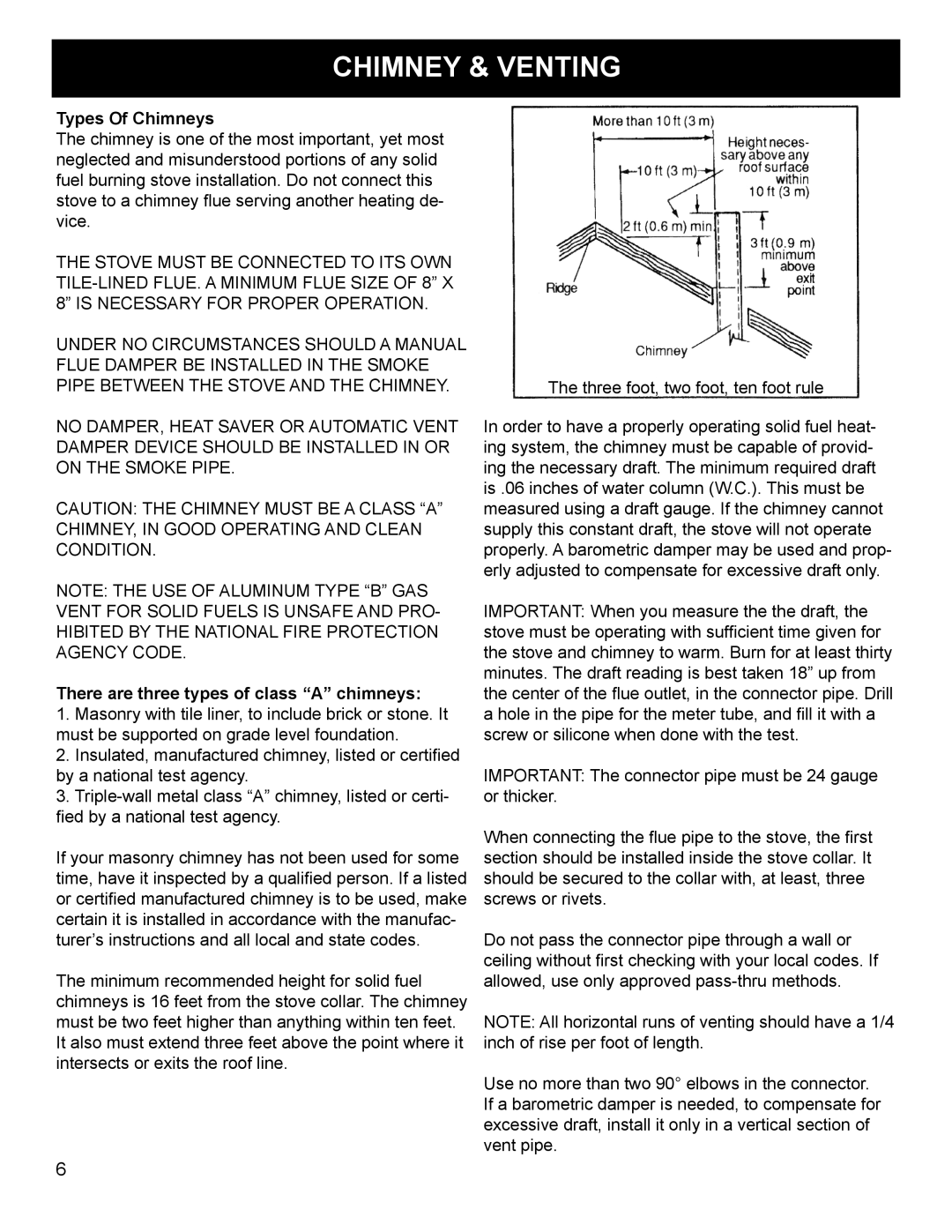SF 250 specifications
The Harman Stove Company SF 250 is an impressive wood-burning stove that exemplifies exceptional craftsmanship, efficiency, and modern design. Renowned for its ability to provide reliable heat while enhancing the aesthetic of any home, the SF 250 has become a favorite among homeowners looking for an efficient yet stylish heating solution.One of the standout features of the SF 250 is its impressive heating capacity. With the ability to warm spaces of up to 2,000 square feet, this stove is well-suited for larger rooms or open-concept areas. The durable steel construction ensures longevity and resilience, allowing it to withstand high temperatures and frequent use. The stove’s sleek design incorporates a clean, contemporary look that can seamlessly blend into various interior styles, making it a versatile choice for any setting.
The SF 250 also boasts advanced combustion technology, which means it burns wood more efficiently than conventional stoves. This not only provides optimal heat output but also reduces emissions and pollution, making it an environmentally friendly option. The secondary combustion system maximizes the burn of gases, allowing the stove to extract more energy from the same amount of wood, leading to longer burn times and less frequent reloading.
Additionally, the Harman SF 250 includes a large viewing window, allowing users to enjoy the mesmerizing ambiance of the fire while also benefiting from heat radiating into the room. This feature adds a cozy atmosphere to the home, providing both warmth and aesthetic appeal. The easy-to-use air control system allows for precise adjustments to the burn rate, giving users complete control over the heat being generated.
The stove is designed with user convenience in mind, featuring an ash pan that simplifies cleanup and maintenance. The easy access to internal components also allows for straightforward servicing, ensuring that your stove remains in peak condition for years to come.
In summary, the Harman Stove Company SF 250 is a remarkable blend of efficiency, style, and technology. Its powerful heating capabilities, advanced combustion system, and user-friendly features make it a top choice for those seeking a dependable wood-burning stove. Whether for a cozy evening or cold winter nights, the SF 250 provides both comfort and elegance, making it a worthy investment for any home.

